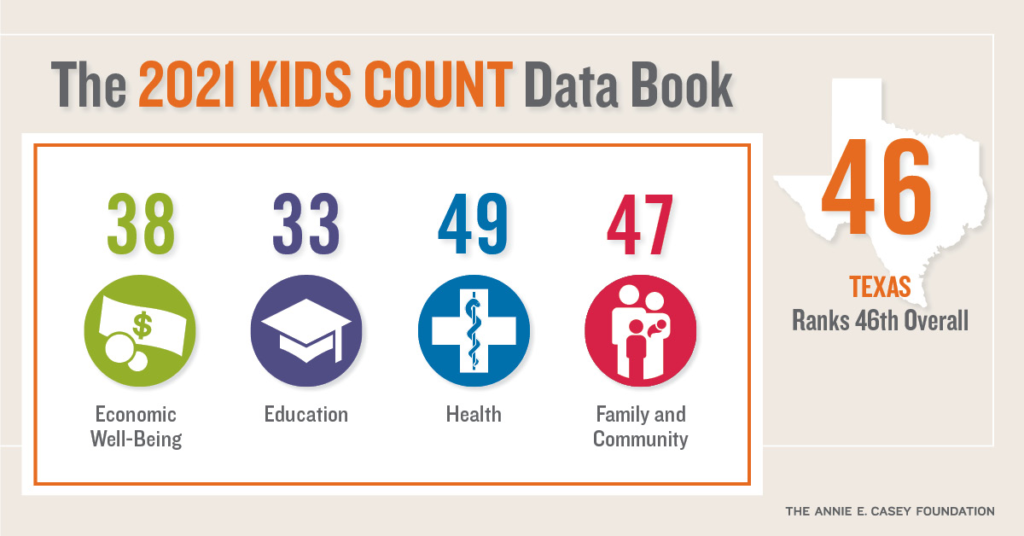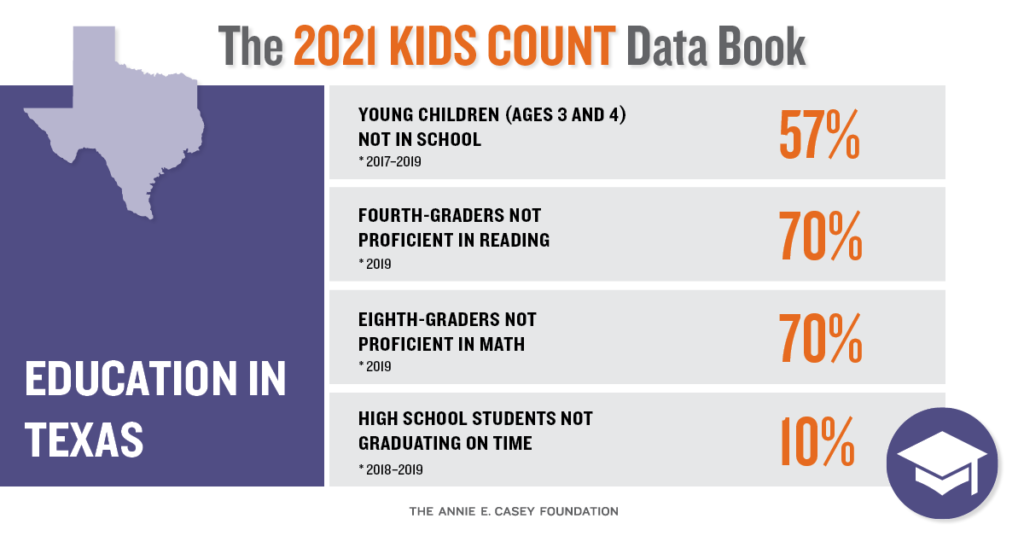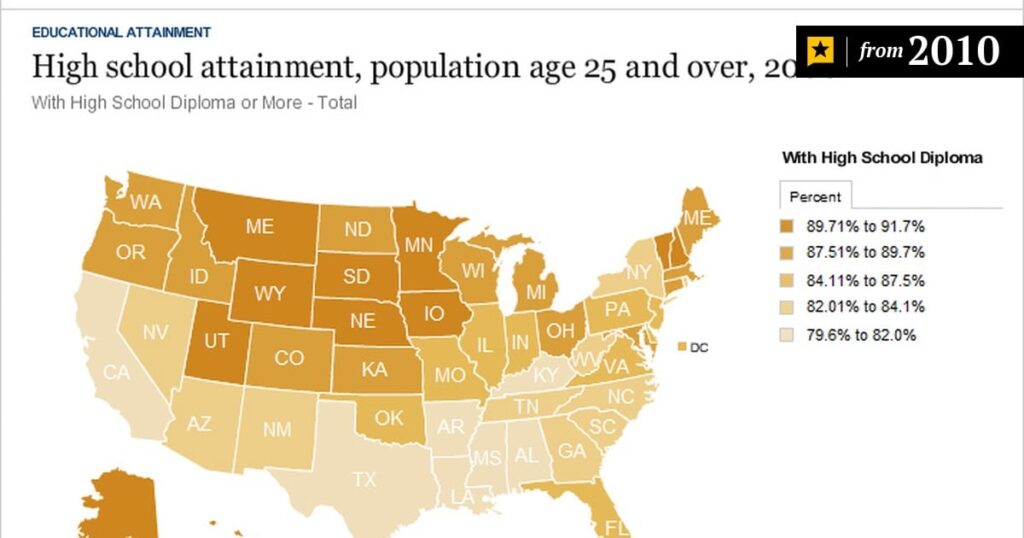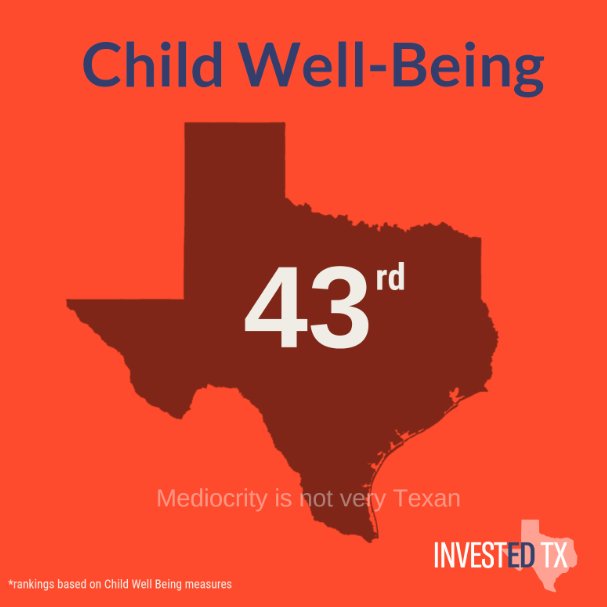Texas’s ranking in child education is a topic that sparks curiosity and concern for many parents and educators alike. With its vast size and diverse population, the state of Texas plays a crucial role in shaping the future of education in the United States. Understanding where Texas stands in terms of child education can provide valuable insights into the state’s commitment to nurturing young minds and preparing them for a successful future. In this article, we will explore the current ranking of Texas in child education and delve into the factors that contribute to its educational landscape.

This image is property of everytexan.org.
Overview of Child Education in Texas
Introduction to Child Education
Child education is a critical aspect of society, as it lays the foundation for individuals’ intellectual, social, and emotional development. In Texas, the state has made considerable efforts to ensure access to quality education for all children. The Texas education system encompasses a diverse range of educational options, including public schools, charter schools, private schools, homeschooling, and virtual learning. This comprehensive article provides an in-depth analysis of the current state of child education in Texas, including an assessment of educational performance, an exploration of key education indicators, and an examination of the quality of public education in the state.
Importance of Quality Education for Children
Quality education plays a vital role in shaping the future of individuals and society as a whole. It equips children with the knowledge, skills, and values necessary to succeed in the ever-evolving world. For children in Texas, receiving a high-quality education is crucial to their academic achievement, personal growth, and future career prospects. Quality education fosters critical thinking, creativity, problem-solving skills, and effective communication. Moreover, it helps to reduce educational disparities, promote social mobility, and build a strong foundation for lifelong learning.
Current State of Child Education in Texas
Assessment of Educational Performance
The assessment of educational performance is a key indicator of the overall state of child education in Texas. The Texas Education Agency (TEA) employs various assessments, including the State of Texas Assessments of Academic Readiness (STAAR), to measure students’ proficiency in core subjects such as mathematics, English language arts, science, and social studies. These assessments provide valuable insights into students’ academic progress and help identify areas for improvement.
Reviewing Key Education Indicators
Several key education indicators are used to evaluate the state of child education in Texas. These indicators include high school graduation rates, college readiness, student achievement, and dropout rates. By analyzing these indicators, policymakers and educators can assess the effectiveness of the education system and implement targeted interventions to improve educational outcomes for students.
Statistical Data on Child Education in Texas
Statistical data provides a comprehensive overview of child education in Texas. As of the latest available data, Texas has approximately 5.4 million students enrolled in public schools, making it the second-largest state in terms of student population. The state also has a diverse student demographic, with a significant proportion of students classified as economically disadvantaged or English language learners. Additionally, Texas has seen steady growth in student enrollment over the years, presenting unique challenges and opportunities for the education system.

This image is property of everytexan.org.
Quality of Public Education in Texas
Public School System in Texas
The public school system is the primary provider of education for the majority of children in Texas. The Texas public school system consists of more than 1,200 school districts and charter schools, delivering education to a diverse student population. Public schools in Texas adhere to state curriculum standards and are accountable for meeting state-defined educational goals.
Standardized Testing and its Role
Standardized testing plays a significant role in assessing the quality of public education in Texas. The STAAR tests, administered annually, measure students’ mastery of grade-level knowledge and skills. These tests provide valuable data to evaluate student performance, identify areas for improvement, and track progress over time. However, critics argue that an overemphasis on standardized testing may lead to a narrow focus on test preparation rather than holistic learning.
Funding and Resource Allocation
The quality of public education in Texas is heavily influenced by funding and resource allocation. The state employs a complex funding formula to distribute funds to school districts, taking into account factors such as student enrollment, district size, and student demographics. However, concerns have been raised regarding the adequacy and equity of funding, particularly for districts with high concentrations of economically disadvantaged students.
Teacher Preparation and Certification
The quality of education in Texas is greatly influenced by the qualifications and effectiveness of its teachers. To become certified teachers in Texas, educators must meet specific educational requirements, complete teacher preparation programs, and pass certification exams. Ongoing professional development is also encouraged to ensure teachers are equipped with the necessary knowledge and instructional techniques to meet the diverse needs of students.
Parental Involvement in Education
Parental involvement is a crucial aspect of quality education. In Texas, parents are encouraged to actively participate in their children’s education through various initiatives, such as parent-teacher associations and school advisory committees. Parental involvement positively impacts student achievement, attendance rates, and overall school climate.
Challenges Faced by Public Schools
Despite the efforts to provide quality education, Texas public schools face several challenges. These include limited resources, achievement gaps among student subgroups, teacher shortages, and high student-to-teacher ratios. Additionally, the diverse needs of a large and diverse student population present unique challenges in providing equitable educational opportunities for all.
Alternatives to Public Education in Texas
Charter Schools and Their Impact
Charter schools provide an alternative to traditional public schools in Texas. They operate with more autonomy and flexibility in curriculum, staffing, and instructional methods. Charter schools are funded using public funds but are governed by independent boards. While some charter schools have demonstrated success, others have faced criticism for inadequate oversight, accountability, and financial mismanagement.
Private Schools and Education Quality
Private schools in Texas provide an alternative to both public and charter schools. These schools often have smaller class sizes, specialized programs, and a rigorous curriculum. Private schools are funded through tuition fees and private donations rather than public funds. While private schools offer certain advantages, such as personalized attention and a more exclusive environment, accessibility and affordability remain a challenge for many families.
Homeschooling and Education Outcomes
Homeschooling is another alternative to public education in Texas. Homeschooling allows parents to educate their children at home, following their preferred curriculum and instructional methods. While homeschooling offers flexibility and individualized instruction, concerns have been raised about the lack of standardized assessments, socialization opportunities, and parental qualifications.
Virtual Learning and Distance Education
Virtual learning and distance education have gained prominence, particularly in response to the COVID-19 pandemic. Texas offers virtual learning options through online charter schools and district-run programs. These programs utilize technology to deliver education remotely, providing flexibility and personalized learning experiences. However, access to technology and reliable internet connectivity are essential for successful virtual learning, posing challenges for students in underserved areas.

This image is property of everytexan.salsalabs.org.
Initiatives and Policies Supporting Child Education in Texas
Early Childhood Education Programs
Early childhood education programs play a crucial role in preparing children for success in school and beyond. Texas has implemented various initiatives to expand access to high-quality early childhood education, such as pre-kindergarten programs and Head Start. These programs focus on cognitive, social, and emotional development, providing a strong foundation for future academic achievement.
State Funding for Education
The state of Texas supports child education through funding initiatives. The Texas Legislature allocates funds for education through the Foundation School Program, which aims to provide equitable funding for public schools. However, concerns have been raised about the adequacy of funding and the need for additional resources to address the diverse needs of students and improve educational outcomes.
Grants and Scholarships for Students
Texas offers various grants and scholarships to support students in pursuing higher education. The Texas Education Agency administers grant programs, such as the Texas Educational Opportunity Grant and the Texas Public Education Grant, which provide financial aid to eligible students. Additionally, scholarships are available for students based on merit, financial need, or specific fields of study.
Legislation and Reforms in Texas Education System
The Texas education system undergoes continuous legislative and policy reforms to drive improvements and address challenges. Recent reforms have focused on areas such as accountability, curriculum standards, college and career readiness, and teacher preparation. These reforms aim to enhance educational opportunities, close achievement gaps, and improve the overall quality of child education in Texas.
Factors Affecting Child Education in Texas
Socioeconomic Factors
Socioeconomic factors significantly impact the educational outcomes of children in Texas. Students from economically disadvantaged backgrounds often face barriers to accessing quality education, such as limited resources, inadequate support systems, and a lack of exposure to enriching experiences. Addressing these socioeconomic disparities is crucial to ensure equitable educational opportunities for all students.
Demographic Diversity
Texas is known for its diverse student population, with students representing various ethnic, cultural, and linguistic backgrounds. The demographic diversity poses unique challenges in providing inclusive and culturally responsive education. Meeting the diverse needs of students requires culturally competent teachers, culturally relevant curriculum, and targeted support services.
Teacher Shortages and Retention
Teacher shortages remain a significant challenge in Texas, particularly in critical subject areas such as mathematics, science, and special education. Factors contributing to the shortage include low salaries, increasing workload, and a lack of incentives to attract and retain qualified teachers. Addressing teacher shortages and improving retention rates are essential for ensuring a high-quality education for all students in Texas.
Educational Disparities in Urban and Rural Areas
Educational disparities persist between urban and rural areas in Texas. Rural schools often face unique challenges, such as limited access to resources, fewer extracurricular opportunities, and difficulty recruiting qualified teachers. Urban schools, on the other hand, may grapple with issues such as overcrowding, high student-to-teacher ratios, and concentrated poverty. Addressing these disparities requires targeted interventions and resource allocation to meet the specific needs of each community.
School Safety and Bullying
Ensuring a safe and nurturing learning environment is crucial for child education in Texas. School safety concerns, including bullying, violence, and substance abuse, can significantly impact students’ well-being and academic performance. Schools and policymakers in Texas have implemented various initiatives, such as prevention programs, anti-bullying policies, and security measures, to promote a safe learning environment.
Special Education Services
Providing adequate support and services for students with disabilities is an important aspect of child education in Texas. Special education services aim to address the unique needs of students with disabilities, ensuring equal educational opportunities and inclusion. Texas has specific policies and procedures in place to evaluate students for eligibility for special education services and to develop individualized education plans.

This image is property of thumbnails.texastribune.org.
Comparison with Other States’ Education Rankings
How Texas Compares to National Averages
When comparing Texas to national averages in child education, the state’s rankings across various indicators provide important insights. Texas performs slightly below the national average in terms of high school graduation rates, but it surpasses the national average in terms of college readiness indicators. Understanding these comparisons can help identify areas of strength and areas requiring improvement.
Rankings and Performance Comparison
According to national rankings, Texas ranks around the middle in terms of educational performance and outcomes. The National Assessment of Educational Progress (NAEP) provides valuable data on Texas students’ performance in subjects such as math, reading, and science when compared to students from other states. Analyzing these rankings helps policymakers and educators develop strategies to enhance educational outcomes and rise in national rankings.
Identifying Strengths and Weaknesses
Analyzing rankings and performance comparisons helps identify both the strengths and weaknesses of child education in Texas. Some strengths may include the focus on college readiness and the implementation of innovative educational programs. On the other hand, weaknesses may include achievement gaps among different student subgroups or areas where improvement is needed, such as early childhood education access or teacher quality.
Investments and Innovations in Texas Child Education
Technology Integration in Classrooms
Technology integration in classrooms plays a significant role in preparing students for the digital age. Texas has made investments in providing technology resources and infrastructure to schools, aiming to enhance teaching and learning experiences. Integrating technology supports personalized learning, collaboration, and the development of critical digital literacy skills.
STEM Education Initiatives
Science, technology, engineering, and mathematics (STEM) education initiatives have gained prominence in Texas. The state recognizes the importance of STEM education in preparing students for future careers in STEM fields. Various programs, partnerships, and resources have been established to promote STEM education, including specialized schools, STEM-focused curriculum, and extracurricular opportunities.
Career and Technical Education Opportunities
Career and technical education (CTE) programs provide students with practical skills and knowledge for the workforce. Texas offers a wide range of CTE programs, allowing students to explore career pathways and gain hands-on experiences in fields such as healthcare, manufacturing, and information technology. These programs aim to bridge the gap between education and the workforce, equipping students with relevant skills for their future careers.
Partnerships with Businesses and Universities
Collaboration between educational institutions, businesses, and universities is essential for enhancing child education in Texas. Partnerships provide students with access to real-world experiences, mentorship opportunities, and internships. These collaborations also facilitate the development of specialized educational programs tailored to meet the evolving needs of industries.

This image is property of pbs.twimg.com.
Impact of COVID-19 on Child Education in Texas
Transition to Online Learning
The COVID-19 pandemic has significantly impacted child education in Texas, leading to a swift transition to online learning. Schools implemented various remote learning models, such as virtual classrooms and online platforms, to ensure continuity of education during times of social distancing. This transition required educators, students, and parents to adapt quickly to new technology and instructional methods.
Learning Loss and Academic Challenges
The prolonged disruption caused by the pandemic has resulted in learning loss and academic challenges for many students in Texas. Extended periods of remote learning, reduced access to resources, and the absence of in-person instruction have contributed to decreased learning outcomes. It is crucial for educational institutions to identify and address these challenges to mitigate the impact on students’ academic progress.
Social and Emotional Impact on Students
The pandemic has not only affected academic learning but also the social and emotional well-being of students in Texas. Social isolation, increased stress levels, and limited interaction with peers have impacted students’ mental health. Schools have implemented various strategies, such as virtual counseling services and social-emotional learning programs, to support students’ emotional needs during these challenging times.
Mitigating Strategies by Educational Institutions
Educational institutions in Texas have implemented various strategies to address the challenges posed by the pandemic. These strategies include additional academic support services, professional development for teachers on remote instruction, distribution of technology resources to students in need, and collaborations with community organizations to provide resources and support to families. By implementing these strategies, educational institutions aim to minimize the negative impact of the pandemic on child education.
Conclusion
In conclusion, child education in Texas is a complex and multifaceted landscape comprising various types of schools and educational initiatives. While Texas has made significant efforts to improve the quality of education, challenges remain in areas such as funding, teacher shortages, and educational disparities. However, the state has also seen innovative investments in technology integration, STEM education, and career and technical education. As Texas continues to navigate the impact of the COVID-19 pandemic, it is crucial for policymakers and stakeholders to address the current educational challenges, identify areas for improvement, and invest in strategies that promote equitable access to high-quality education. By prioritizing the needs of all students and building collaborative partnerships, Texas can further enhance its ranking in child education and prepare the next generation for success in a rapidly changing world.
